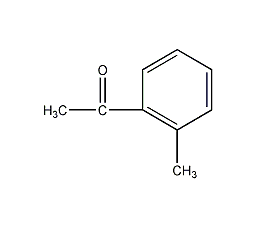
Structural formula
| Business number | 05VD |
|---|---|
| Molecular formula | C6H4BrNO2 |
| Molecular weight | 202.01 |
| label |
2-Nitrobromobenzene, o-Nitrobromobenzene, o-Bromonitrobenzene, 2-nitrobromobenzene, aromatic compounds |
Numbering system
CAS number:577-19-5
MDL number:MFCD00007045
EINECS number:209-409-0
RTECS number:CY9040450
BRN number:2044109
PubChem number:24850607
Physical property data
1. Character: yellow crystal[1]
2. Melting point (℃): 40~42[2]
3. Boiling point (℃): 261[3]
4. Relative density (water=1): 1.62[4]
5. Saturated vapor pressure (kPa): 100.77 (258℃)[5]
6. Octanol/water partition coefficient: 2.52 [6]
7. Flash point (℃): >110[7]
8. Solubility: insoluble in cold water, Soluble in hot water and most organic solvents such as ethanol, ether, acetone, and benzene. [8]
Toxicological data
1. Acute toxicity No data available
2. Irritation No data available
Ecological data
1. Ecotoxicity No data available
2. Biodegradability No data available
3 .Non-biodegradability No information available
Molecular structure data
1. Molar refractive index: 40.48
2. Molar volume (cm3/mol): 117.4
3. Isotonic specific volume (90.2K ): 313.2
4. Surface tension (dyne/cm): 50.5
5. Polarizability (10-24cm3): 16.05
Compute chemical data
1. Reference value for hydrophobic parameter calculation (XlogP): None
2. Number of hydrogen bond donors: 0
3. Number of hydrogen bond acceptors: 2
4. Number of rotatable chemical bonds: 0
5. Number of tautomers: none
6. Topological molecule polar surface area 45.8
7. Number of heavy atoms: 10
8. Surface charge: 0
9. Complexity: 134
10. Number of isotope atoms: 0
11. Determine the number of atomic stereocenters: 0
12. Uncertain number of atomic stereocenters: 0
13. Determine the number of chemical bond stereocenters: 0
14. Number of uncertain chemical bond stereocenters: 0
15. Number of covalent bond units: 1
Properties and stability
1. Stability[9] Stable
2. Incompatible substances[10] Strong oxidizing agent, strong reducing agent, strong alkali
3. Conditions to avoid contact[11] Heating
4. Polymerization hazard[12] No polymerization
5. Decomposition products[13]Nitrogen oxides, hydrogen bromide
Storage method
Storage Precautions[14] Store in a cool, ventilated warehouse. Keep away from fire and heat sources. The packaging is sealed. They should be stored separately from oxidants, reducing agents, alkalis, and food chemicals, and avoid mixed storage. Equipped with the appropriate variety and quantity of fire equipment. Suitable materials should be available in the storage area to contain spills.
Synthesis method
Prepared from o-nitroaniline through the following steps. Cool the mixture of o-nitroaniline and sulfuric acid to 0-5°C, and slowly add sodium nitrite aqueous solution with stirring until the reaction starch potassium iodide test paper turns blue. The obtained diazonium salt solution was slowly added to the copper bromide solution at 40°C while stirring. After cooling, extract with diethyl ether, wash the extract with alkali solution, hydrochloric acid solution and water, and then recover the diethyl ether to obtain the product. The yield is about 70%.
Purpose
Used in organic synthesis. [15]

 微信扫一扫打赏
微信扫一扫打赏

